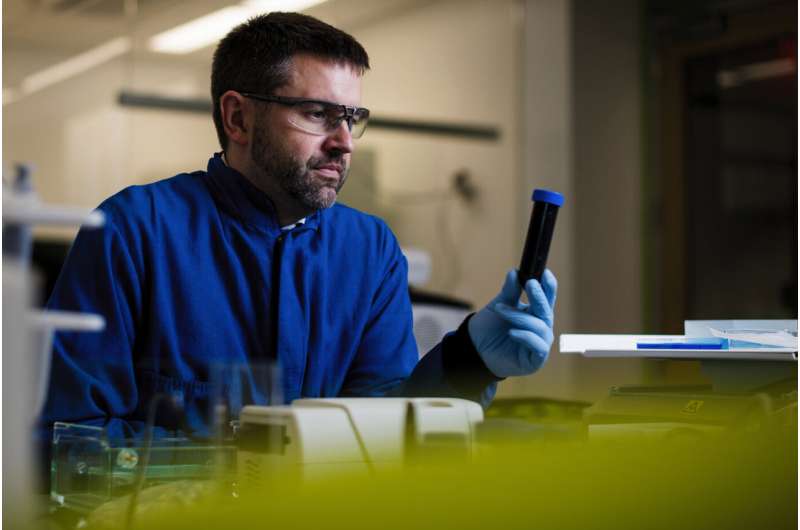
Variants of the coronavirus have come to represent the ultimate danger: A curveball in our plans to bring an end to the pandemic that has ravaged our world and taken millions of lives. And here’s another one—omicron—that may embody the worst fear of pandemic observers, because it seems to evade some vaccine protections.
But a mutating virus might not necessarily be a specter of doom.
“If you think about a virus, aldara use in horses what’s the purpose? What’s the virus trying to do?” asks Jared Auclair, who is an associate teaching professor of chemistry and chemical biology at Northeastern, leads the Biopharmaceutical Analysis Training Lab, and runs the university’s COVID-19 testing facility, the Life Sciences Testing Center in Burlington, Massachusetts.
It’s trying to stay alive, he says. And “if the virus kills someone, if it kills the host, it dies with the host. So it totally defeats the purpose.”
Because the goal of a virus is to survive, replicate, and spread, it tends to evolve toward being more infectious and less deadly. There are exceptions and other factors, but in general, says Auclair, that’s what virologists expect to see occur with SARS-CoV-2, the coronavirus that causes COVID-19.
To understand why that is, think about the process of natural selection that you probably learned about in high school biology.
A virus survives by replicating itself. It essentially hijacks our cells and uses some of the machinery in those cells to make more of itself. Those progeny, if you will, then go on to infect other cells and the process repeats.
The virus doesn’t make perfect copies of itself, and that results in changes, which are called mutations. Some changes will hurt its chances to survive and replicate, so those mutations typically aren’t passed on to future generations. Mutations that don’t disrupt the virus’s ability to survive and spread can become established. But the changes that help the virus survive, replicate, and spread to other hosts are most likely to lead to a new dominant variant of the virus because it’s simply better than previous strains at doing what viruses need to do.
“The easiest thing for the virus to do is to stay in the same person for as long as possible,” Auclair says. “It’s less work, so to speak, as opposed to hopping to another host.” It’s also advantageous for the virus to become more infective: The more hosts that the virus can establish itself in, the better odds it can survive and thrive.
There’s another factor, however. The virus also needs to evolve to avoid the attacks its host’s immune system sends out to eliminate it.
For the coronavirus, in someone who has been vaccinated or has been previously infected with the virus, the immune system mobilizes against the invading virus in two main ways, says Mansoor Amiji, university distinguished professor of pharmaceutical sciences and chemical engineering at Northeastern. The immune system sends out antibodies specifically designed to block the virus from attaching to and thus infecting a cell, and also has a system for destroying infected cells in order to stop the replication process.
It’s that first part, the antibody response, that scientists say is worth watching with the omicron variant. That strain shows many mutations on the spike protein of the virus, which is the part of the virus that attaches to a host’s cells—and antibodies are designed to block that connection from happening by attaching to the virus’s spike proteins themselves. But those antibodies are made to identify and tack onto an earlier version of the virus’s spike protein.
If a virus evolves to evade the immune system’s tactics, that could mean an infection is more likely and that more cells are likely to be infected, which typically means a more severe case of the disease.
A lot of questions remain about omicron, specifically, and whether or not it is a more infectious but less severe strain than its predecessors. Scientists are working on finding answers.
But even if omicron—or any other variant—does dodge some of the body’s vaccine-induced or infection-acquired immune response, that could be a sign that humans’ tactics are working, Amiji says.
“It is, to some degree, a cat-and-mouse game, but it’s an evolutionary process for the virus. It’s like, you know, ‘these guys are out to get me, I will try to change myself to become better, to resist,'” he says. The mutations that prove advantageous for the virus facing hosts with immunity are much more limited than if the virus could just run rampant in the population.
Source: Read Full Article
